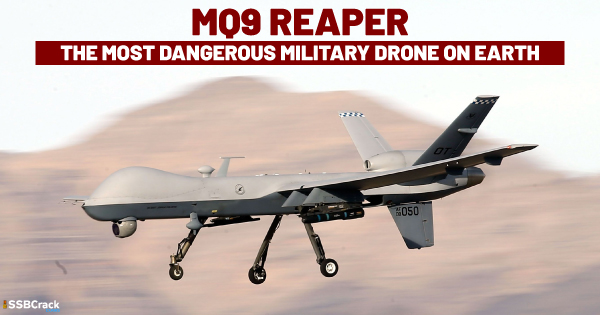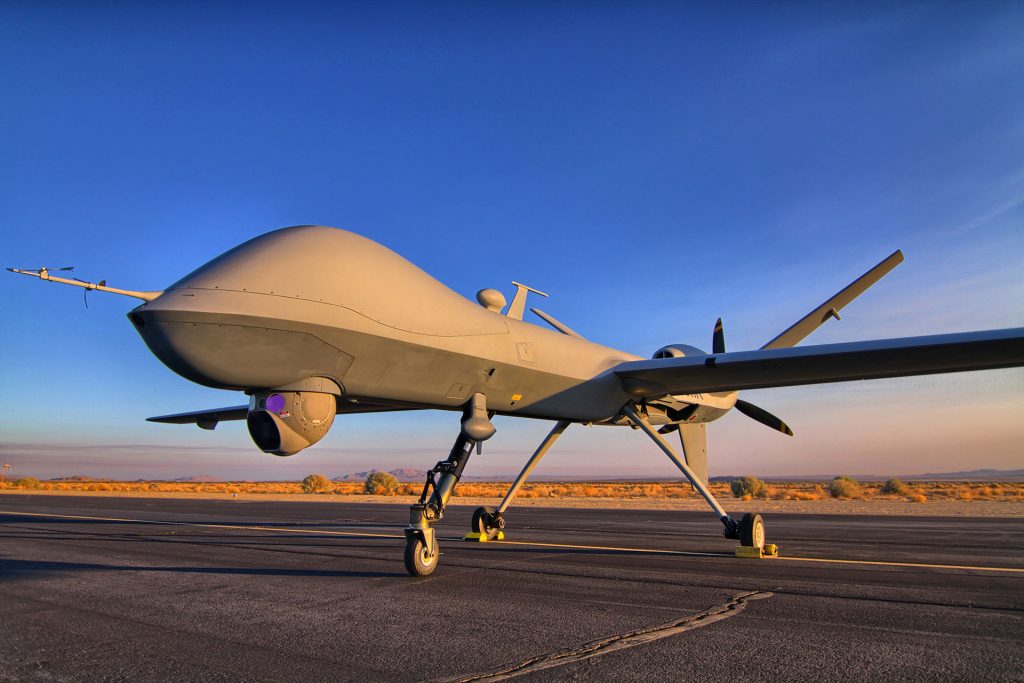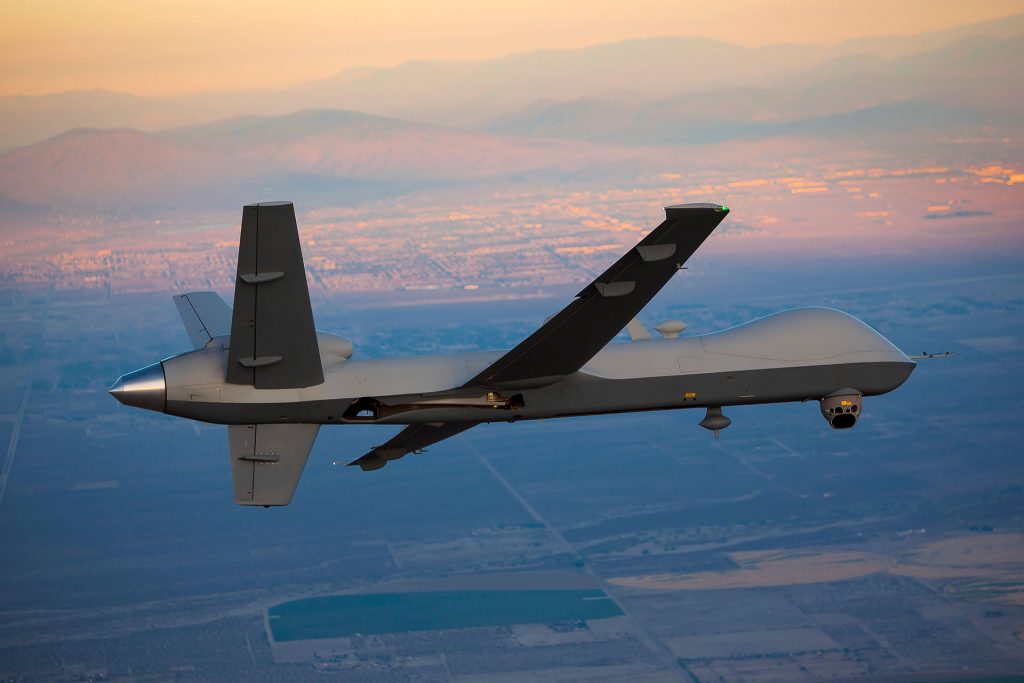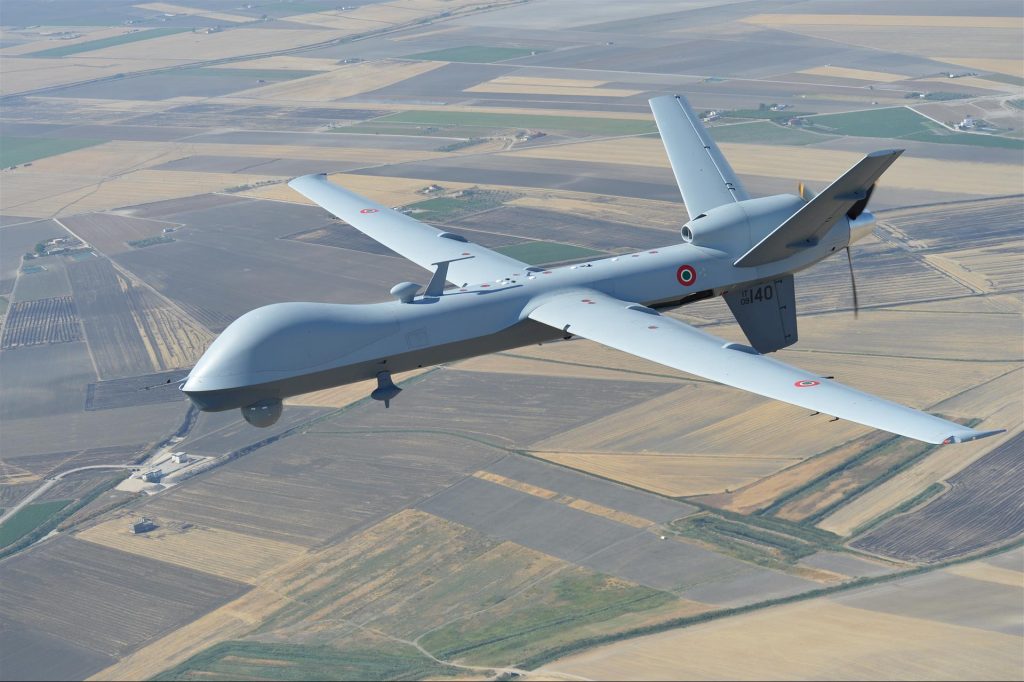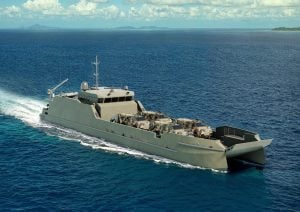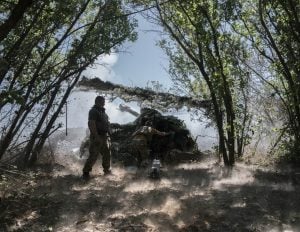The MQ-9 Reaper, formerly known as the Predator B, is a remotely piloted vehicle (RPV) that was created by General Atomics Aeronautical Systems (GA-ASI) for use by the Royal Air Force, the Italian Air Force, the United States Air Force, and the United States Navy. The MQ-9 is the first hunter-killer unmanned aerial vehicle (UAV) intended for high-altitude, extended observation.
Despite the MQ-9’s ability to fly pre-programmed routes independently, the aircrew in the ground control station is always in charge of a monitoring or controlling the aircraft, and the pilot is always in charge of directing the use of weapons. This is why the MQ-9 is more often referred to as a remotely operated vehicle.
Several sensors, including a thermal camera, can be used by operators to look for targets and survey the environment. According to one assessment, the onboard camera can read a license plate from 3.2 kilometers (two miles) away.
Also read: Indian Navy Inducts First Human-Carrying Drone “Varuna”
Specifications
- Up to 14 AGM-114 Hellfire air-to-ground missiles or two 500 lb (230 kg) GBU-12 Paveway II laser-guided bombs can be carried. It is also possible to transport the 500 lb (230 kg) GBU-38 Joint Direct Attack Munition (JDAM). To enable the use of the AIM-92 Stinger air-to-air missile, testing is now being conducted.
- The drone receives an instruction from the operator over a satellite link in 1.2 seconds.
- The endurance of an MQ-9 with two external fuel tanks weighing 1,000 pounds (450 kilograms) each and 1,000 pounds of ammunition is 42 hours. When loaded with ammunition, the Reaper can fly for 14 hours.
- The GBU-12 Paveway II laser-guided bomb, AGM-114 Hellfire II air-to-ground missiles, and AIM-9 Sidewinder are just a few of the weaponry carried by the MQ-9. Recent examples include the GBU-38 JDAM (Joint Direct Attack Munition).
- The MQ-9 Reaper can carry laser-guided bombs, such as the GBU-12, by trading off some of its missiles. The updated Reaper may function as a productive “Hunter-Killer” platform, seeking and attacking targets with a high likelihood of success, thanks to the availability of high-performance sensors and a big capacity of precision-guided munitions. It has an L-3 Communications Tactical Common Datalink installed (TCDL)
Tests are being conducted so that the AIM-92 Stinger air-to-air missile can be added. The Predator B, according to the Air Force, will boost the service’s capacity to maintain “deadly persistence,” with the RPV flying over a battle area day and night in anticipation of a target.
Also read: CHIMERA: India’s First Anti-Drone System
An armed RPV complements piloted strike aircraft in this situation very well. While a cheaper RPV can be kept in operation almost continuously with ground controllers operating in shifts and carrying a lesser ordnance load to destroy targets, a piloted strike aircraft can be employed to deliver bigger amounts of ordnance on a target.
The Reaper, like the Predator, is a weapons system and not simply a single drone, which is an important fact to keep in mind. Each Reaper system is made up of four separate Reaper drones that are controlled by four distinct flight teams. The total cost to develop the system is around $54 million. A pair of people—a pilot and a sensor operator—operate each Reaper drone remotely. The pilot’s primary responsibility is controlling the aircraft, while the sensor operator keeps an eye on the many sensor systems the Reaper uses (such as infrared and night-vision cameras).
Features
- Triple-redundant flight control system
- Redundant flight control surfaces
- Remotely piloted or fully autonomous
- MIL-STD-1760 stores management system
- 7 external stations for carriage of payloads
- C-Band line-of-sight data link control
- Ku-Band Beyond Line-of-Sight (BLOS)/SATCOM data link control
- Over 90% system’s operational availability
- C-130 transportable (or self-deploys)
Also Read: Complete List Of Drone Used By Indian Armed Forces
India and the Reaper
The General Atomics MQ-9 Reaper Drone, perhaps the most potent combat unmanned combat aerial vehicle (UCAV) in the arsenal of the US military, is inching closer to being acquired by India. The MQ-9 Reaper, sometimes known as Predator B, has killed numerous notable targets in the Middle East. Two MQ-9B SeaGuardian drones that India’s armed forces currently lease from the US are in use. And New Delhi is working to implement a deal to purchase 30 more, with 10 going to each of the Indian Army, Navy, and Air Force.
Defense Secretary Ajay Kumar presided over a meeting of India’s Defence Procurement Board (DPB) on November 15. Furthermore, it is anticipated that more conversations would be needed before a decision is made regarding these drones.
If approved, the agreement will cost India $3 billion. There is much talk that the upcoming 2+2 meeting between the foreign and defense ministers of India and the US will include an announcement about the purchase of MQ-9 Reapers.
Also read: Importance Of UAVs, Drones, And RPAS For Indian Armed Forces
India rented the MQ-9 Reapers SeaGuardian version in 2020 for use in maritime awareness and surveillance. According to The Eurasian Times, the armed forces inked a contract to buy 30 MQ-9 drones, 10 for each service, after being pleased with its operational performance. The MQ-9B SkyGuardian is the name of the Air Force’s version.
But because of obstacles with the expense and the process, it has been in limbo. Now that the two drones’ leases are coming to an end and the Indian Navy is emphasizing the need to introduce these drones, the permission is anticipated to happen soon.
Also read: Importance Of Drones In The Indian Subcontinent
Follow SSBCrackExams for more such articles.
To crack the SSB Interview, You can join our SSB interview live classes batch and we recommend you to Enroll SSB INTERVIEW ONLINE COURSE. Trusted by thousands of defence aspirants.
